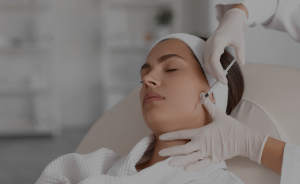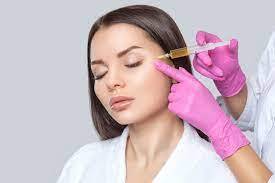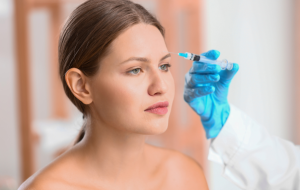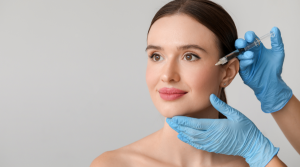Dermal fillers have gained immense popularity in the last few years. Evidence of that is the millions worldwide seeking one form or the other filler treatment.
Dermal fillers are a remarkable, instantaneous way to add volume lost to aged skin. They’re like the elixir of life in a syringe!
In this blog post, we’ll discuss every facet of dermal fillers so you can decide whether they’re good for you.

Fundamentals of Dermal Fillers
How do dermal fillers work?
Dermal fillers are a popular cosmetic procedure. They are non-surgical. So, what are dermal fillers? In short, they are gel-like injectables that help you look young.
Dermal fillers minimize scars, fine lines and wrinkles, and restore lost volume to your face. Filler treatment isn’t restricted to the face alone. They are equally effective in treating other parts of your body.
What ingredients are in dermal fillers?
Several different types of dermal fillers are available. However, the most commonly sought-after is hyaluronic acid (HA). HA is a chemical found naturally in our bodies. Hyaluronic acid binds to water, keeping the skin elastic, plump, and young.
Injection sites are usually collagen deficient. Experts inject fillers into collagen deficient parts of your body. Collagen gives your skin structure.
All dermal filers—except those like Bellafil, Radiesse, and Sculptra that promote collagen production—can be reversed using a hyaluronidase/vitrage solution.
Are they secure?
Dermal fillers are regarded as minimally invasive and safe. They have been in use for many years and have been approved by the FDA as medical devices. With more alternatives catered to certain body areas, they are safer than ever these days. Some patients have a had mild allergic reactions.
Which locations are treated with dermal fillers?
The eye area, cheeks and lips may be the most visible region where dermal fillers are used, but most people think that’s all there is. In addition to lips, and cheeks, dermal fillers, however, can be applied to any part of the body! The following conditions are best treated with dermal fillers:
Chest: Sculptra and PRP, which promote collagen, may help reduce the appearance of sun damage and wrinkles on your chest.
Hands Radiesse or Restylane LYFT may help reduce signs of aging on the hands, such as more noticeable veins and tendons.
Above the Knees: Sculptra, often combined with PRP, may be used to treat crepey, wrinkly skin above the knees. A similar option for treating this region is to use Radiesse or a similar big-molecule filler.
Arms – Sculptra, PRP, and fat transfer may help to fill in and smooth out parts of your arms that are wrinkled or have “wings.”
Buttocks: You may elevate and fill up your buttocks region using Sculptra, PRP, and fat transfer.
Thighs: PRP and Sculptra may increase collagen production to reduce the appearance of cellulite.
Feet: As you age, the pads under your feet may become less durable. Sculptra may stimulate collagen in this region and improve your walking comfort.
Earlobes: Bellafill, Restylane LYFT, and Radiesse may plump and raise your earlobes back to their natural position if earrings have dragged them down.
Under Eyes: Dermal fillers for under-eyes include Belotero, PRP, and Restylane. They may be used to fill in under-eye hollows and dark circles to give a more relaxed, younger-looking appearance.
Bellafill is a filler that may drastically lessen the appearance of acne scars.
Chin: Bellafill may help your skin produce more collagen, giving it more structure and improvement.
Jawline: Sculptra, LYFT, Voluma, and DEFINE may all help lift and reconstruct the skin around your jawline, giving you a more youthful, sculpted look.
Nose: Without the recovery period associated with surgery, you may alter the look of your nose with a non-surgical nose job utilizing dermal fillers like Restylane and Bellafill.
Scars: PRP, Bellafill, and Restylane (including DEFINE and REFYNE) may all help reduce the visibility of scars by smoothing out the region surrounding the scar and stimulating the development of new collagen.
Lips: Juvederm dermal fillers, Restylane, and Restylane Kyss may all help to make your lips more symmetrical and full.
How to Select Appropriate Dermal Fillers Near Me
It’s advisable to heed the advice of a skilled professional with in-depth knowledge of this topic when selecting a dermal filler. Your practitioner may suggest the right filler based on their knowledge and your particular requirements. Different fillers work better for different locations and different persons. It takes skill to treat areas like the eyes, other areas of the face.
Who Should Get Dermal Fillers and Who Shouldn’t?
Facial fillers, lip fillers, and all other Dermal fillers are safe and effective for most individuals; thus, most are suitable candidates.
Anybody attempting to rectify a glaring imbalance or attain face equilibrium.
It is noteworthy that the choice and placement of fillers are significantly influenced by face anatomy. Choose a specialist who determines which parts of your face need care using the Phi proportions method.
Phi proportions include:
- The height and length of the brows.
- The nose’s length.
- The cheek’s peak.
- The size and form of the lips.
- The length of the chin and lips is in a lateral profile.
Your physician will use those statistics to assess what areas of your body need filler. For example, the onset of jowls results from volume loss in the cheeks. Thus, the filler would be inserted there.
Those with severe autoimmune diseases or blood problems, those who have an ongoing infection, and those who have a documented allergy or sensitivity are not appropriate candidates for dermal fillers. Furthermore, the use of fillers is strongly discouraged for those with body dysmorphic disorder since it may exacerbate their underlying psychological problems.

What Dermal Fillers Offer
Benefits of Dermal FIllers
The outcomes are evident and happen right away. Unlike cosmetic surgery, where you would have to wait for results, you may see how your fillers appear immediately. For instance adding volume or restoring volume to your face is instantly visible.
Not as much downtime or recuperation as with cosmetic surgery. The most important thing that will be required of you is to refrain from strenuous activity after treatment, and you may have mild swelling or bruises. Furthermore, the process doesn’t hurt too much.
As we said before, the danger is negligible. The FDA deems dermal fillers to be fully safe.
Enduring outcomes. Dermal fillers may last six months and five years, depending on the kind.
Elevated self-worth. Dermal fillers will make you fee and look amazing, and they will also greatly increase your self- onfidence.
Given these advantages, you may be asking whether dermal fillers can replace cosmetic c surgery. The answer is yes, a lot of the time. Most cosmetic surgery operations aim to make you seem younger, and dermal fillers help you look that way.
However, dermal fillers are a preferable choice since they need little to no recovery time, are less costly, require just a topical anesthetic rather than general anesthesia, provide instant results, and most of them are reversible. They’re win-win situations!
The Effects of Dermal Fillers Over Time
Everyone has seen celebrities and even regular individuals who have overdone their filler use, resulting in what is called “pillow face syndrome”—puffy cheeks or excessively plump lips. Known as a “fat feline” appearance, the face seems broader overall with small eyes and a pointed chin; in some circumstances, the filler has altered the facial structure, not in a good way!
While this style may be well-liked on social media, it looks artificial and indicates that you’ve had work done in real life. When it comes to filler, more is not always better. Instead, search for a practitioner who achieves outcomes that seem natural. To be sure they are proficient injectors, look at their before and after pictures.
If you’re curious about how fillers function inside your skin, imagine Play-Doh. Fillers adhere to one another side by side and pile on one another. Contrary to popular belief, they do not merge. So that you don’t have to add more later, selecting a practitioner who provides you with the appropriate quantity of filler during your first sess on is essential.
When it comes to fillers, there is a lot of misinformation out there, especially from unskilled practitioners on the internet. The following are some widespread misconceptions about dermal fillers that you may hear:
After receiving treatment, avoid massaging your face! Massaging your face can reposition the filler and alter its look. Wait at least two weeks following treatment before rubbing your face to ensure that the filler settles correctly. Extreme heat and cold should also be avoided, as they may harm your filler.
Are dermal fillers permanent?
It’s untrue that fillers are irreversible! With a solution known as hyaluronidase enzyme, many fillers based on hyaluronic acid may be reversed.
This is especially wonderful news if you visit a supplier that gives you outcomes that you’re not satisfied with. Make sure you choose a skilled injector to prevent unfavorable outcomes! Referals, reviews, and before-and-after pictures are all excellent resources for selecting a specialist.
It’s not always true that wider lips translate into greater looks. Large, inflated lips are not to everyone’s taste, and if you overfill them, you may regret the treatment or have to undo it.
Applying non-absorbable permanent filler injections to your LPS increases the likelihood that you may develop non-reversible granulomas, lumps, or nodules. Although it doesn’t always occur, are you willing to take that chance? Choose soft, reversible fillers if you’re not thrilled with the outcome.

What is the duration of dermal fillers?
Depending on the filling, yes. Keep in mind that a filler that lasts a year may only be seen in the mirror for nine or ten months, but it remains in your body for that whole year.
Conclusion
Dermal fillers may be ideal to keep your young appearance or address asymmetry. Several alternatives and methods for improving and enhancing your look include Restylane, Juvederm, and Sculptra. Would you like to know more about this non-surgical procedure, desired results, how to achieve natural looking results?
Contact Beauty Aesthetics, Toronto, for a free consultation today!







